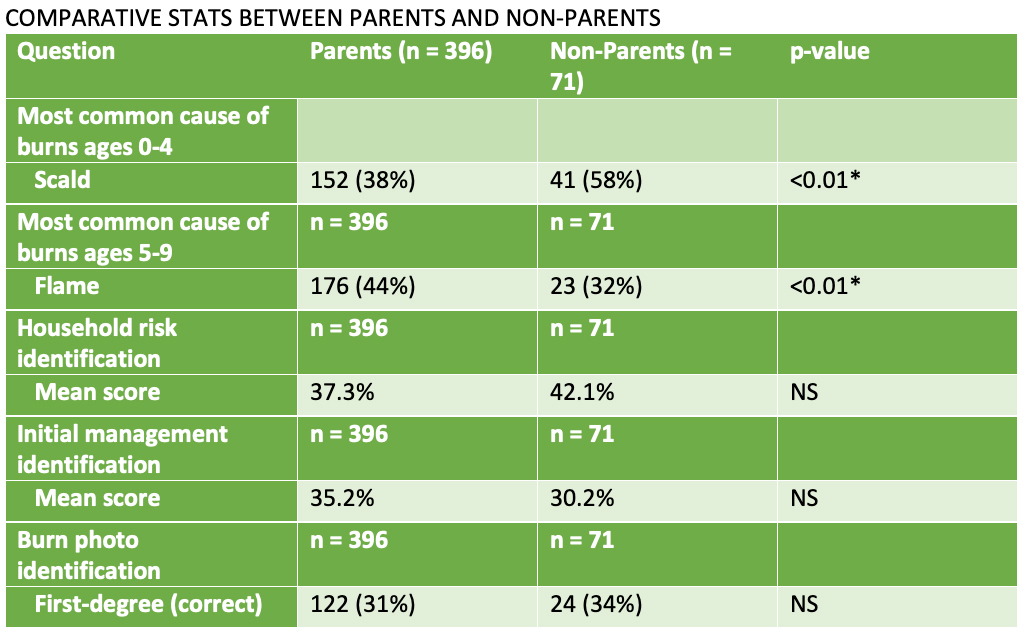Public Perception of Household Risks for Pediatric Burn Injuries
Tomer Lagziel12, Kimberly Khoo1, Christopher Lopez1, Carrie Cox1, Robin Yang1, Julie Caffrey1, C Scott Hultman1, Richard Redett1
1Department of Plastic and Reconstructive Surgery, Johns Hopkins University School of Medicine, Baltimore, MD; 2Sackler Faculty of Medicine, Tel-Aviv University, Tel-Aviv, Israel
Introduction: Children are uniquely vulnerable to injury because of near-complete dependence on caregivers. Unintentional injury is leading cause of death in children under the age of 14. Burns are one of the leading causes of accidental and preventable household injuries, with scald burns most commonly in younger children and flame burns in older ones. Education is a key tool to address burn prevention, but unfortunately these injuries persist. Critically, there is a paucity of literature investigating adult comprehension with respect to potential risks of household burns. To date, no study has been performed to assess management readiness for these types of injuries without seeking medical care.
Methods: QualtricsTM surveys were distributed to laypersons via Amazon Mechanical-Turk. Demographics were self-reported. The survey was divided into two parts, management-knowledge, and risk-identification. The management part involved a photograph of a first-degree pediatric burn injury and required identification of the degree of injury and three potential initial managements. The risk-identification section required correctly identifying the most common mechanisms of burn injury for different age groups followed by general identification of 20 household burn risks. Survey responses were analyzed using two-tailed Student's t-tests and chi-square analyses, univariate and multivariate analysis, and linear-regression.
Results: Of the 467 respondents, the mean age was 36.57 years, and was 59.7% (279) male. Only 3.2% of respondents were able to correctly identify all 20 potential risks listed in our survey. Additionally, only 4.5% of respondents correctly identified all three appropriate initial management options (cool water, sterile gauze, and over-the-counter analgesics) without misidentifying incorrect options. For image-based injury classification, the most common response was incorrectly second-degree with 216 responses (42.2%) and the second-most common response was correctly first-degree with 146 responses (31.3%). Most respondents claimed they would not seek medical attention for the injury presented in the photograph (77.7%). When comparing the responses of individuals with children to those without, there were no statistically significant differences in abilityto assess household risks for pediatric burns. For the entire population of respondents, the mean score for correctly identifying risks was 38%.
Conclusion: This study revealed a significant gap in public awareness of household risks for pediatric burns. Furthermore, while most individuals would not seek medical care for a first-degree pediatric burn injury, they were readily available to identify proper initial management methods. This gap in knowledge and understanding of household pediatric burn injuries should be addressed with increased burn education initiatives and more parental counseling opportunities.
Back to 2022 Posters


